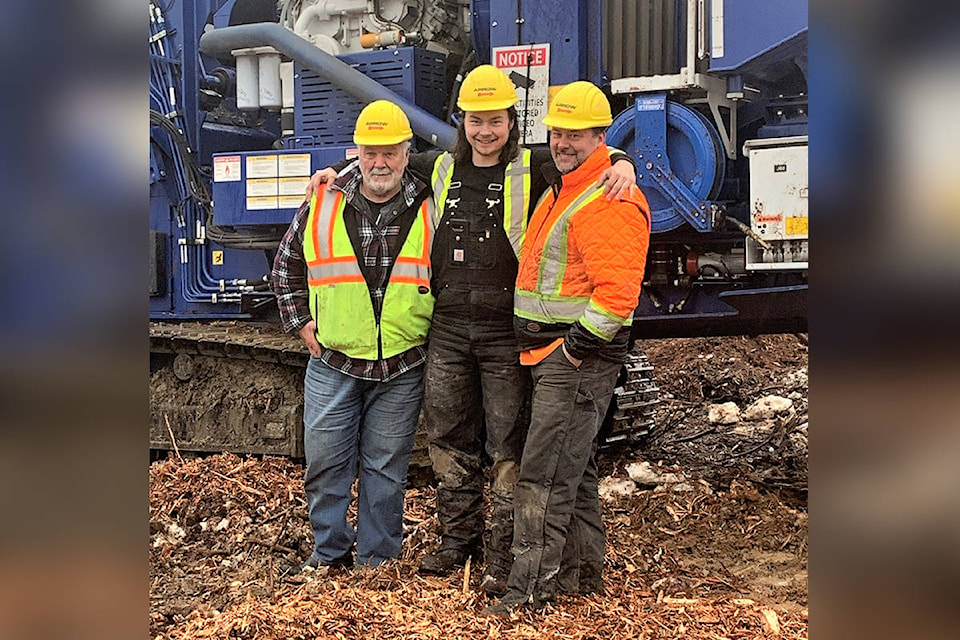Wood fibre that would have become another plume of smoke along the Clearwater landscape has instead been turned into electricity, powering a pulp and paper mill in Kamloops.
A partnership between the Wells Gray Community Forest (WGCF) and Arrow Transportation Systems Inc. (Arrow) saw 18,992 cubic metres of unusable wood fibre — about 350 logging trucks-worth — ground into hog fuel and hauled out of the area. The fuel was then transported to Domtar in Kamloops to generate electricity to run operations, with any excess energy being fed back into the grid.
The Forest Enhancement Society of British Columbia (FESBC) funded the project, through a grant totalling $720,748 to Arrow. This includes the WCGF project which cost $307,000.
“When our team at Arrow first looked at a fibre utilization project in the Community Forest, there were many challenges — wet ground and large road ditches,” said Greg Kilba, division manager portable wood processing and log buying for Arrow. “There was a lot of fibre that could not be utilized by sawmills because of the amount of rotten wood typical of this type of stand.”
The grant approval allowed Kilba and his team to develop a plan for the WGCF, and in mid-October, they began to grind the residual wood that was left over from earlier logging operations into hog fuel. The WGCF was also able to work with logging contractors to build more accessible roads for the grinder equipment and trucks to access the slash piles.
The project not only allowed a local business to do its part in producing greener energy, but also took the pollution from the slash piles out of Clearwater’s atmosphere. The benefit-cost ratio to extract unusable wood fibre from logging operations isn’t usually worth the effort, said FESBC operations manager Dave Conly, so many companies will pay the stumpage fees instead and burn the fibre in a slash pile, releasing not just smoke, but hazardous gases into the air.
“As a Community Forest, we can be nimble and innovative in finding ways to be collaborative and get work done,” said George Brcko, WGCF general manager. “The grinding and hauling of these residuals meant that we didn’t have smoke hanging in our valleys from burning slash.”
He added the removal of the leftover fibre means the opportunity for a catastrophic wildfire in the area has been greatly reduced.
The District of Clearwater’s forestry working group, comprised of city councillors, local government representatives and industry stakeholders, have been advocating for this type of work, said Mayor Merlin Blackwell, because of the countless benefits it creates.
These include “the economic benefits of good-paying jobs for people, the social benefits when steady employment is available and smoke is removed from our airshed and the environmental benefits when wood fibre is optimally used to reduce our carbon footprint,” he said.
The project is one of $40 million in initiatives across B.C. funded by the FESBC to recover residual wood fibre to avoid the creation of greenhouse gas emissions that are caused by burning. It is just one more way to make a traditional industry viable as mills have shut down over the years.
The funds from FESBC make an uneconomic product, residual wood fibres, an economic option again for logging operations and various businesses, said Conly.
“Overall, FESBC projects will have generated 5.3 million tonnes of net carbon benefits which is equivalent to removing 1.1 million cars off the road for a year,” he said. “Forestry is a great way to achieve B.C.’s and Canada’s climate change targets, while at the same time create more jobs in the bio-economy.”
newsroom@clearwatertimes.com
Like us on Facebook and follow us on Twitter
